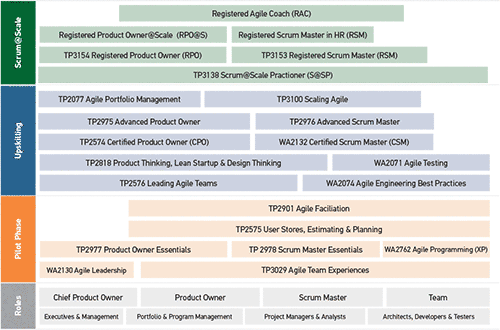Product thinking (lean Start-up & Design Thinking
The advent of agile has helped teams increase delivery speed, improve quality, and increase overall productivity.
When a team transitions from waterfall to agile, it’s prevalent to still hang on to old ways of thinking. One of the last holdouts is typically keeping a “project” mindset, where everything must fit into a project structure. This fits in with the “big planning upfront” mentality, which is not Agile.
It’s essential for teams to transition to a “product” mindset, where understanding outcomes and testing every idea before implementation is part of the culture, and software isn’t just output delivered. The value of the delivered software should be measured, and customer feedback actively sought, which then becomes feedback for new ideas.
Leading Business Trends
Design-driven companies such as Apple, Coca-Cola, IBM, Nike, Procter & Gamble, and Whirlpool have outperformed the S&P 500 over the past ten years by an accumulated 211%. This portfolio of 16 publicly traded companies (called the Design Value Index) incorporates Design Thinking into corporate strategy.
Areas Where Product Thinking can apply
Product design | Service and experience design | Business design | Leadership | Organizational change
*Note a 2-day version of this class is also available. Bolded items are not included in the 2-day course.
Custom Courses are available.
learning Objectives
- Understand the design thinking process
- Identify and assess opportunities through customer needs analysis
- Create product specifications based on customer needs that are desirable (human), feasible (technology), and viable (business)
- Generate and evaluate new product and service concepts through applied creativity
- Learn iterative prototyping
- Design services for enriched customer experiences
- Evaluate the economics of product development
- Plan and manage innovation projects effectively
What you’ll learn
Agile Overview
- Definition
- Scrum overview
- XP overview
- What agile is not
Product Thinking vs. Project Thinking
- Project definition
- Attributes of project-based organizations
- Product definition
- Attributes of product-based organizations
Impact of Architecture and Software Development Practices
- The drawbacks of monolithic architecture
- Microservices
- Quality isn’t just for QA
- TDD
- BDD
Lean Startup
- Purpose
- Who is the customer?
- Lean Canvas
- Build-Measure-Learn
- The MVP
- Pivot or persevere
- Development practices
Design Thinking
- Definition
- Empathize
- Define the problem
- Ideate
- Prototype
- Test
Applying product thinking to agile
- Self-organization
- Component teams vs. feature teams
- Dual-track agile
- Discovery phase
- Implementation phase
DevOps
- Principles
- The value streams
- Automate everything
- Feedback loops
- Tools
